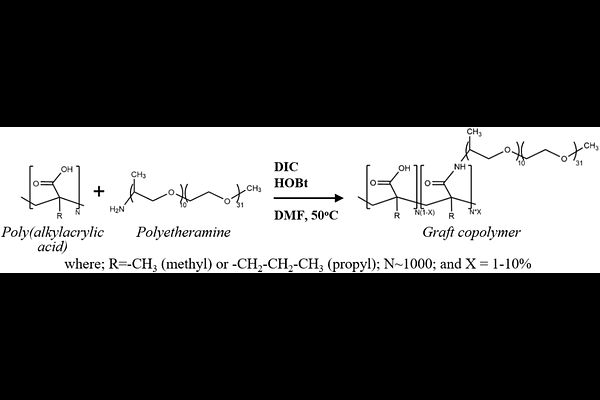Antimicrobial Loaded Graft-Copolymer Nanoparticles for Treatment of Pseudomonas aeruginosa Infections

Antimicrobial Loaded Graft-Copolymer Nanoparticles for Treatment of Pseudomonas aeruginosa Infections
Soler, Y. V.; Xu, W.; Lima, M. R. N.; McDonald, J.; Jagpal, S. K.; Kirn, T. J.; Hussain, S.; Devore, D. I.; Roth, C. M.
AbstractNearly 80% of cystic fibrosis patients are affected by persistent lung infections, with Pseudomonas aeruginosa being one of the major culprits. Treatment of P. aeruginosa is further complicated by its ability to form biofilms. Anionic compounds within the biofilm and thick cystic fibrosis mucus interact with cationic antimicrobials, hindering treatment efficacy. In this study, we investigated the treatment of lung infections by delivering antimicrobials via polyelectrolyte surfactants that are composed of an anionic poly(alkylacrylic acid) backbone with grafted polyetheramine pendent chains. When combined with cationic antimicrobials, they self-assemble into nanoparticles via electrostatic interactions. We assessed the role of backbone chemistry and graft density on nanoparticle physical properties and evaluated the antimicrobial activity of these formulations against planktonic and biofilm cultures of P. aeruginosa strains derived from clinical isolates. All synthesized polyelectrolyte surfactants demonstrated high levels of antimicrobial encapsulation, with the extent of drug bound corresponding to the calculated hydrophilic-lipophilic balance values. We observed significantly increased antimicrobial activity against planktonic cultures using nanoformulations containing one of the polyelectrolyte surfactants, PMAA-g-10%J. In contrast, all tested nanoformulations retained, but did not increase, activity against biofilms. By monitoring membrane potentials and nanoparticle uptake, it was found that the nanoparticles directly associate with the bacterial cell membranes, which may enhance drug delivery and underlie the improved activity against the planktonic bacteria. In conclusion, we provide a proof of concept for the design of polyelectrolyte surfactants for the nanoencapsulation and delivery of cationic drug cargoes against P. aeruginosa infections.